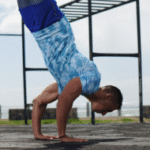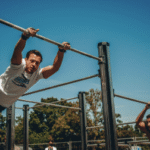What are the Benefits of Hot and Cold Therapy?
Hot and cold therapy, also known as contrast therapy, involves the alternating use of heat and cold applications to the body. This technique has been used for centuries to address various physical ailments and promote overall well-being. Here’s a detailed look at the benefits of hot and cold therapy:
How Hot and Cold Therapy Works:
Heat (Thermotherapy):
Heat application causes vasodilation, which is the widening of blood vessels.
This increased blood flow delivers more oxygen and nutrients to the tissues.
Heat can also relax muscles and reduce stiffness.
Cold (Cryotherapy):
Cold application causes vasoconstriction, which is the narrowing of blood vessels.
This reduces blood flow to the area, helping to reduce inflammation and swelling.
Cold can also numb nerve endings, providing pain relief.
Benefits of Hot and Cold Therapy:
Pain Relief:
Both heat and cold can help to alleviate pain.
Cold therapy is often used for acute pain and inflammation, while heat therapy is more commonly used for chronic pain and muscle stiffness.
Reduced Inflammation:
Cold therapy is particularly effective in reducing inflammation and swelling, especially after an injury.
Improved Circulation:
The alternating use of heat and cold can improve blood flow and circulation, which is essential for healing and recovery.
Muscle Relaxation:
Heat therapy can help to relax tight muscles, reducing muscle spasms and stiffness.
Faster Recovery:
Contrast therapy can help speed up the recovery process after exercise or injury by reducing inflammation and promoting circulation.
Reduced Muscle Soreness:
Contrast therapy can help alleviate delayed-onset muscle soreness (DOMS), the muscle pain that occurs 24-72 hours after exercise.
Increased Range of Motion:
By reducing stiffness and promoting muscle relaxation, heat therapy can help improve range of motion.
Methods of Applying Hot and Cold Therapy:
Ice Packs:
Apply ice packs wrapped in a towel to the affected area.
Heating Pads:
Use heating pads to apply heat to sore muscles.
Hot Baths or Showers:
Soaking in a warm bath or taking a hot shower can provide heat therapy to larger areas of the body.
Cold Baths or Showers:
Taking a cold bath or shower can provide cold therapy.
Contrast Baths:
Alternate between hot and cold water immersion.
Important Considerations:
Timing:
Cold therapy is generally recommended for acute injuries in the first 24-48 hours.
Heat therapy is often used for chronic conditions or muscle stiffness.
Duration:
Apply cold therapy for 15-20 minutes at a time.
Apply heat therapy for 15-20 minutes at a time.
Safety:
Never apply ice or heat directly to the skin.
Avoid using heat therapy on an open wound.
Consult with a healthcare professional if you have any underlying health conditions.
By understanding the benefits and proper application of hot and cold therapy, you can effectively use this technique to manage pain, reduce inflammation, and promote healing and recovery.

What are the Benefits of Hot and Cold Therapy?
Route
Calisthenics Gym Houston Functional Bodyweight Training
Secondary phone: (346) 483-3195
Email: info@calisthenicsclubhouston.com
URL: https://calisthenicsclubhouston.com/
Monday 6:00 AM - 7:00 PM Tuesday 6:00 AM - 7:00 PM Wednesday 6:00 AM - 7:00 PM Thursday 6:00 AM - 7:00 PM Friday 12:00 PM - 6:30 PM Saturday 9:45 AM - 12:00 PM Sunday 3:00 PM - 5:00 PM





